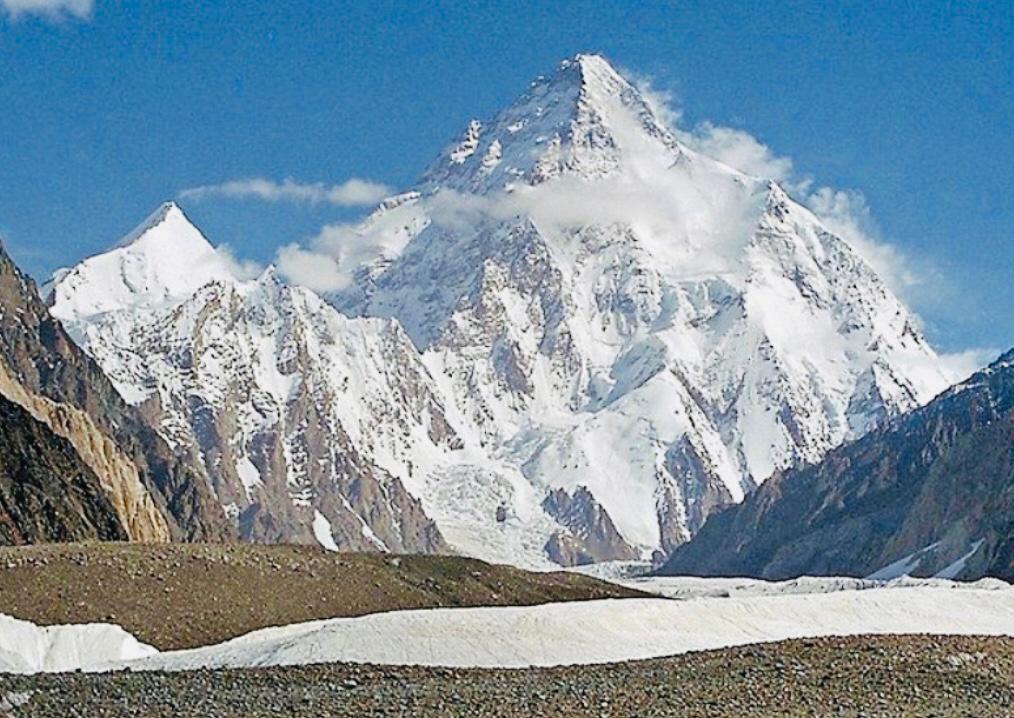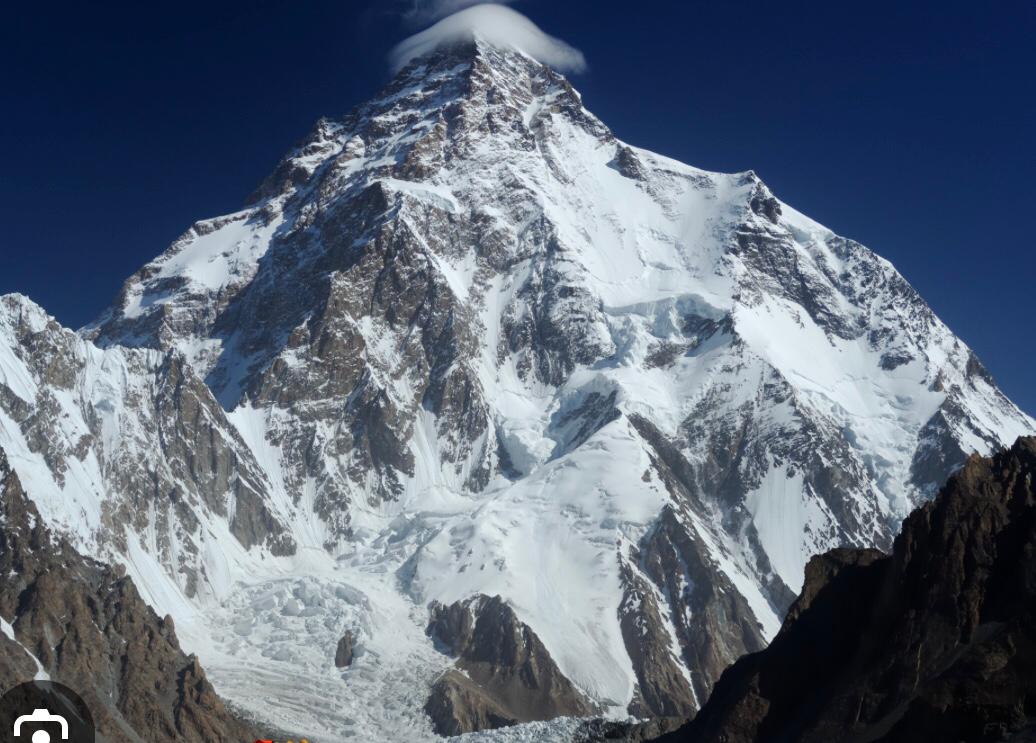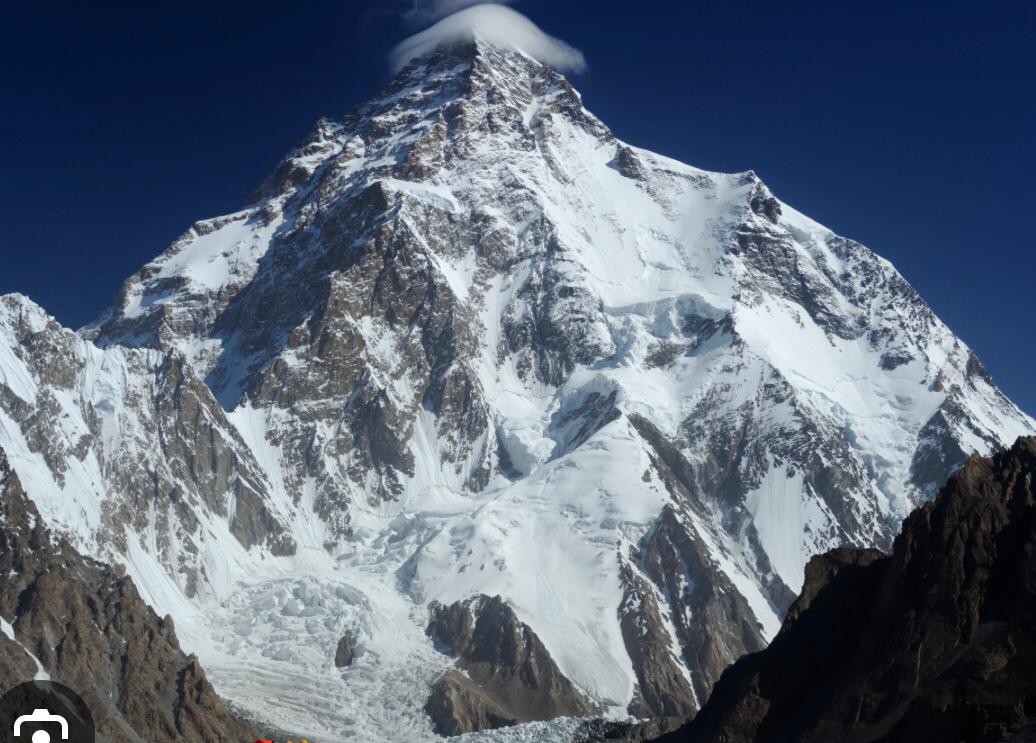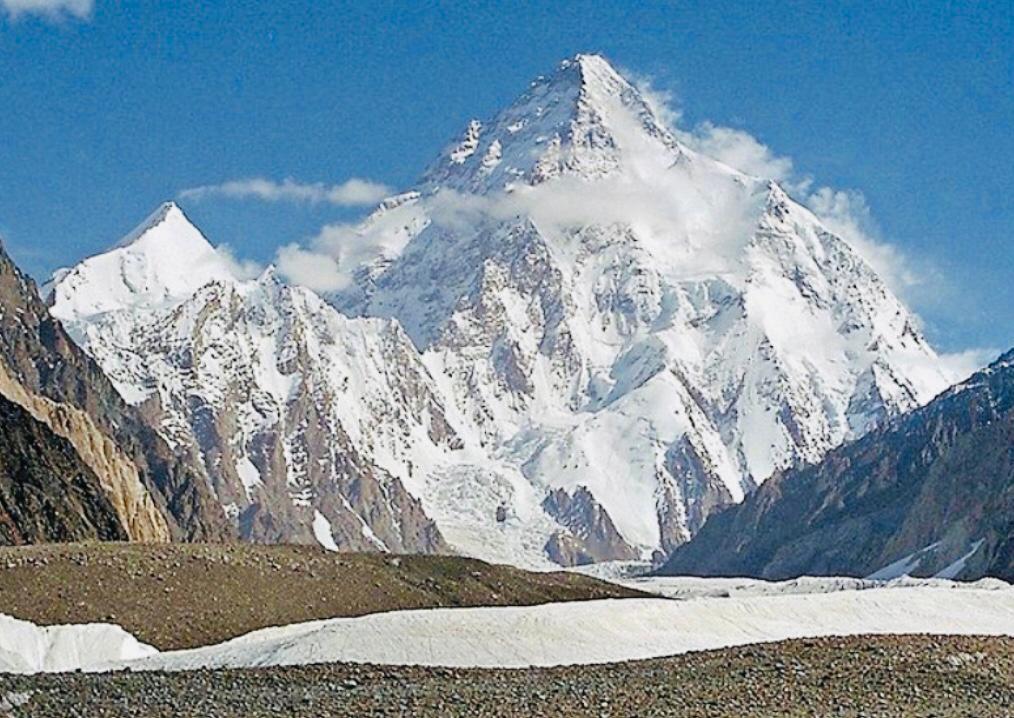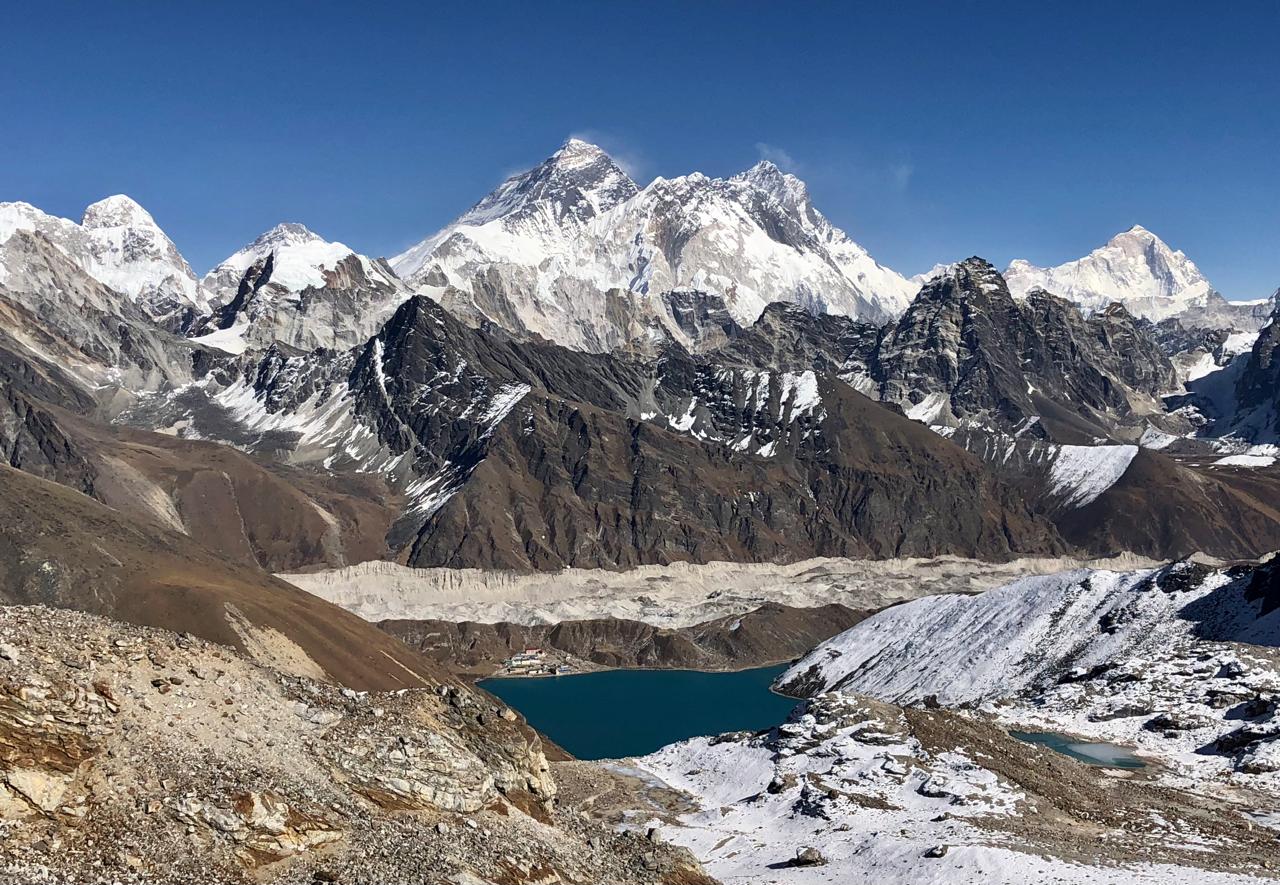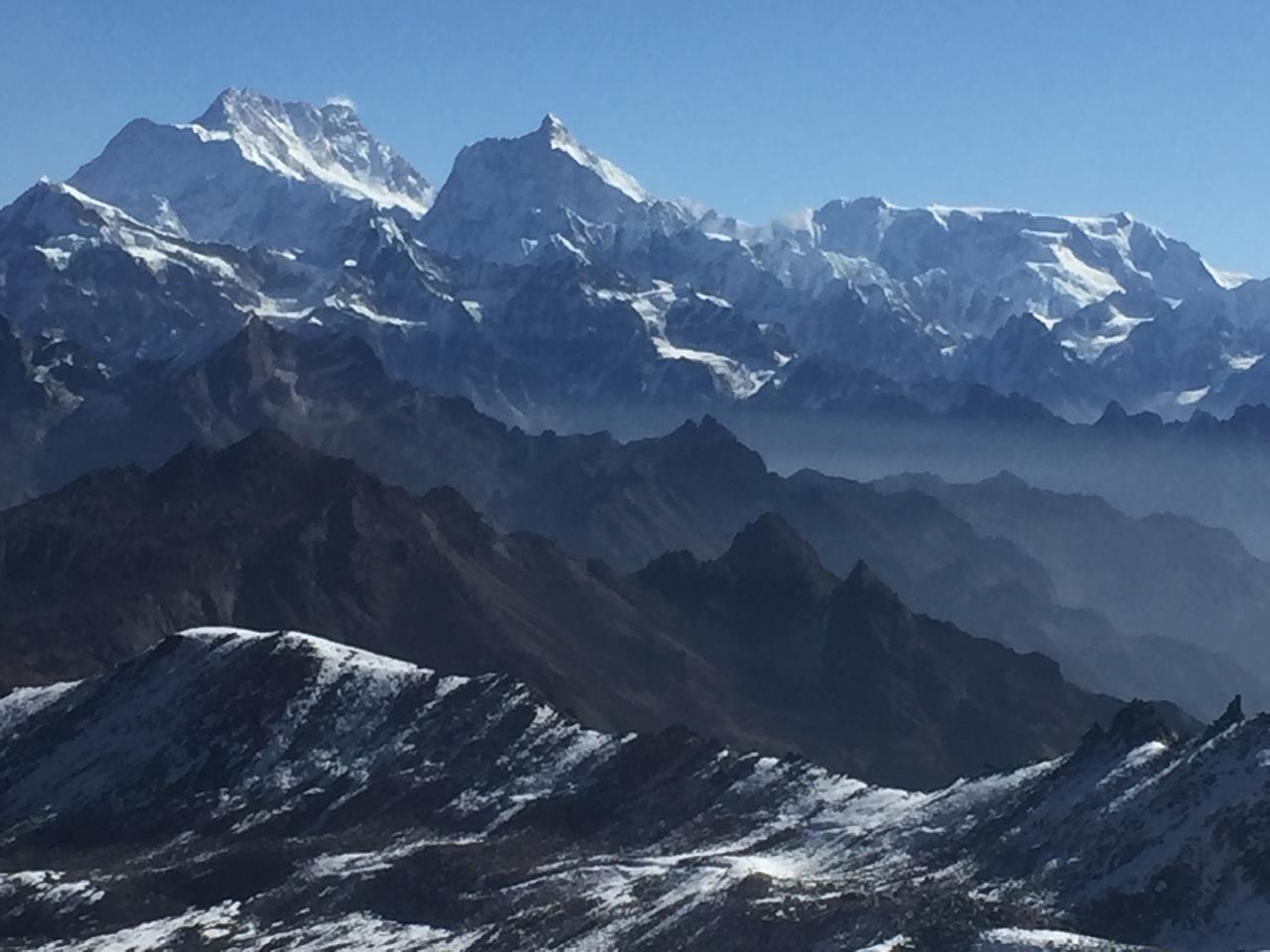K2, also known as Mount Godwin-Austen, is the second-highest mountain in the world, rising to a formidable height of 8,611 meters (28,251 feet). Located in the Karakoram Range, straddling the border between Pakistan and China, K2 commands awe for both its immense elevation and its legendary difficulty. Unlike many of the other 8,000-meter peaks, K2 lacks any relatively "easy" route to the summit, making it one of the most respected and feared mountains in the world of high-altitude mountaineering.
Regarded as the "Savage Mountain," K2 has earned its nickname due to its steep and technical routes, persistent risk of avalanches, and treacherous weather conditions. Its severe angles and narrow ridgelines offer little margin for error. Every route to the summit involves a high degree of technical climbing, over ice, rock, and mixed terrain, making it far more demanding than Everest in many ways. The absence of commercialized support and infrastructure adds to its isolated and unforgiving character.
The most commonly used route to the summit is the Abruzzi Spur, which was first attempted in the early 20th century. It requires climbers to ascend a series of rock towers, ice sections, and steep snowfields, all while navigating narrow ledges and exposed ridgelines. Due to K2's height and its notoriously bad weather, climbers must be extremely selective and strategic in choosing summit windows, which are often few and far between during the short climbing season.
Climbers attempting K2 must possess exceptional physical and mental endurance, as well as considerable high-altitude and technical climbing experience. The route from base camp to the summit includes long, strenuous ascents in extreme cold and at dangerously low oxygen levels. High winds, sudden storms, and falling seracs are constant threats. Supplemental oxygen is used far less frequently on K2 than on Everest, adding to the challenge and prestige of a successful ascent.
The journey to K2 Base Camp is an adventure in itself, taking climbers through the dramatic and remote landscapes of Pakistan's Karakoram region. The trek follows the Baltoro Glacier, leading to Concordia, one of the most breathtaking alpine crossroads in the world, where several 8000-meter peaks, including Broad Peak, Gasherbrum I and II, and K2, can be seen towering above the landscape. Reaching the summit of K2 is not only a test of technical skill but also of patience, resilience, and determination in one of the planet’s harshest and most beautiful environments.
Trip Notes:
Best Time to Visit:
-
Summer climbing season (late June to August) when weather windows are most favorable.
-
Weather can be highly unpredictable with risk of storms and avalanches.
Expedition Highlights:
-
Trek through the Baltoro Glacier to K2 Base Camp (5,150 m), the gateway to the mountain.
-
Views of Gasherbrum I, Broad Peak, and other giants of the Karakoram.
-
Technical climbing on mixed rock and ice on the Abruzzi Spur route.
-
The challenging Bottleneck, a steep couloir beneath seracs, considered one of the most dangerous sections.
-
Deep immersion into remote mountain culture with local Balti guides and porters.
Climbing Route:
-
Standard route: Abruzzi Spur, starting from K2 Base Camp and progressing through Camps I to IV.
-
Technical sections include steep ice walls, rock bands, and the notorious Bottleneck couloir near the summit.
-
Climbers rely heavily on fixed ropes, ice screws, and high-altitude camps for rest and acclimatization.
Difficulty Level:
-
One of the most technically demanding and dangerous 8000m expeditions.
-
Requires prior experience on high-altitude technical climbs and strong endurance.
-
Not recommended for beginners or intermediate climbers.
Key Challenges:
-
Extreme altitude with prolonged exposure to the Death Zone (above 8,000m).
-
Risk of avalanches, rockfall, and serac collapses, especially in the Bottleneck area.
-
Severe weather with sudden storms, extreme cold, and high winds.
-
Complex logistics due to remote location and political sensitivities on Pakistan-China border.
Training & Preparation:
-
Rigorous physical training focusing on endurance, strength, and altitude adaptation.
-
Technical skills training in ice climbing, mixed climbing, crevasse rescue, and fixed rope ascents.
-
Previous expeditions on 7000 m+ peaks strongly recommended.
-
Altitude camps and rotation climbs are essential for acclimatization.
Safety Considerations:
-
Strong dependence on Sherpa/High-altitude porters for load carrying and route fixing.
-
Emergency evacuation is difficult and costly due to remoteness.
-
Use of supplemental oxygen typically recommended above Camp III.
-
Constant weather monitoring and flexibility in summit timing are essential.
Permits Required:
-
Pakistan Government Climbing Permit for K2.
-
Gilgit-Baltistan Tourism Permit.
-
Liaison Officers and local porters are mandatory as per regulations.
